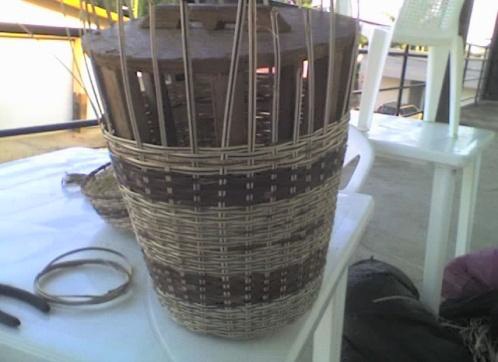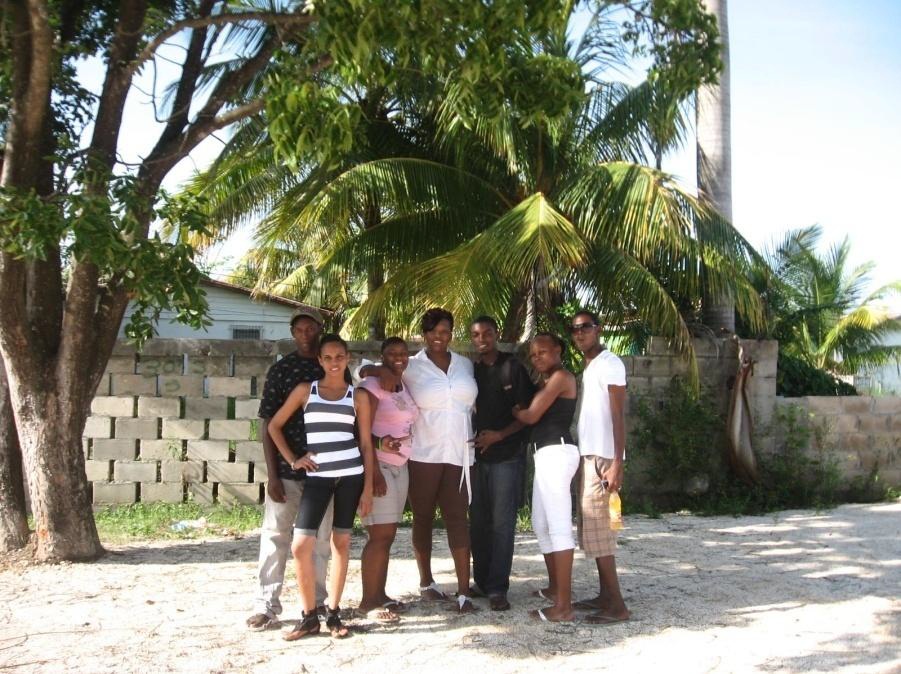
The National Kriol Council was formed in March 1995. Its Memorandum of Association and Articles of Association as a not-for-profit organization were incorporated on April 29, 1996. The object of the Council which addresses this project is as listed below
Over the nineteen years of its existence the NKC can boast many successes, even though support was minimal or non-existent. The commitment of the members to the cause is a testament to the motto of the Organization “wan wan okro ful baaskit” meaning that little by little and with persistence you can reach your goal.
The Council has established a phonetically-based standardized orthography (writing system) for the Kriol language and it has produced several Kriol publications, including through its language arm. Some of these include:
This year there has also seen specific institutional strengthening with assistance from the Social Investment fund. The Council’s assets, are very minimal but this is projected to be upgraded through the Cultural entrepreneurial project funded by Social Investment Fund for high risk youth. This pilot project will be the blue print that can be duplicated in other areas.
The basis of this program will provide training for young persons in culturally based entrepreneurial activities to generate income for the individual and to help sustain the Council. The Council will promote and market the goods and services produced by the trained individuals and provide ongoing opportunities for the youth development.
The program operated under the following goals:
Originally the program targeted twenty five participants for a period of four months at six hours per day. Due to the time and required completion of the program the training was completed within six weeks and more youngster were targeted.
In order to carry out the program, adequate recruitment needed to be conducted. This took the form of presenting the program on the media talk show, press release, and collaborating with different area organizations. Out of this recruitment over one hundred applications were realized. Out of this ninety three applications were completed. Below is a break-down of the applicants.
| Gender | Application | Percentage |
|---|---|---|
| Male | 52 | 56% |
| Female | 41 | 44% |
| Total | 93 | 100% |
| Female | Male | Total | |||||
|---|---|---|---|---|---|---|---|
| Age Range | Persons | Percentage | Age Range | Persons | Percentage | Persons | Percentage |
| 15-20 | 13 | 32% | 15-20 | 28 | 54% | 41 | 44% |
| 21-25 | 22 | 54% | 21-25 | 20 | 38% | 42 | 45% |
| 26-30 | 5 | 12% | 26-30 | 3 | 6% | 8 | 9% |
| 31-35 | 1 | 2% | 31-35 | 1 | 2% | 2 | 2% |
| Total | 41 | 100% | Total | 52 | 100% | 93 | 100% |
| Female | Male | Total | |||||
|---|---|---|---|---|---|---|---|
| Education | Persons | Percentage | Education | Persons | Percentage | Persons | Percentage |
| High School | 21 | 51% | High School | 20 | 39% | 41 | 44% |
| Junior College | 10 | 24% | Junior College | 7 | 13% | 17 | 18% |
| Primary | 6 | 15% | Primary | 21 | 40% | 27 | 29% |
| University | 2 | 5% | University | 1 | 2% | 3 | 3% |
| Unknown | 2 | 5% | Unknown | 3 | 6% | 5 | 5% |
| Total | 41 | 100% | Total | 52 | 100% | 93 | 100% |
Interview sessions were set up, using the facilitators as interviewers in teams of two. From the interviews eighty-one were accepted to be in the program but within the first week six dropped out. Over the course of the training an average of seventy two remained. Individuals signed up for one or two of the seven skill areas, which were- Bamboo Art; basketry; kriol cultural dance; African drumming; sewing; cultural drama and script writing.
During the recruiting period finding places to conduct the various activities was going on. Three locations were identified. The Ministry of Education gave us permission for the Council to use the old ITVET building and there we conducted - bamboo craft, drumming, basketry and drama. The Institute of Creative Arts gave permission to use the Bliss for Script writing and Dancing, and the Yarborough Community Center accommodated the Sewing.
Because some of the facilitators were not accustomed to working with these type of high risk youngsters in the program the counselor on the team gave a half day session on dealing with conflicts and handling other minor problems that may arise. Of course this was not enough time but it helped some. Facilitators were also given handouts to use as guide.
Before the youngsters broke into their respective training areas, the program was broken down to the participants. They were also introduced to the Kriol culture as well as the relationship with other cultures of the country. Of course the time was inadequate. Aspects of marketing were also introduced.
Once the training got under way, it went well for the most part. It is to be understood that the participants were very diverse, inclusive of gang members of opposing gangs whose mobility was limited to either the southside or northside. For this reason the NKC did not do publicity of this program as is normally done with programs and in this case is a first of its kind. Some participants did not want their enemies to know where they were, in fear that they would come to cause trouble.
The training provided a stipend for each participant each receiving the same amount whether they did one or two skill area. This of course was a great incentive for the participants, because they were unemployed. There had to be strict controls where attendance was concerned and participants had to sign a contract which included that they would only be given a stipend for the amount of days they attended the training and participated.
Consistency played a great role here, as we only had to enforce this a couple of times before the message was received.

The Bamboo class was facilitated by Ms Janice Young one of the pioneers of the Bamboo Art in Belize. She had a consistent number of fifteen participants (12 males and 3 female).

In spite of the make-up of this group, the output was tremendous. Some participants were more creative than others but they were all proud of what they produced. They produced a number of rain sticks; large vases; bamboo drums (one-stick rectangular); jewelry boxes; napkin holders; one wind chime; a variety of necklaces, earrings and bracelets, shot glasses; small and large cup with handle

The basket weaving class was conducted by Kenneth Welch from Gales Point. Participants for this class started off with 8 and an additional two were added late in the training (8 males 2 females).

The dance was facilitated by Jason Wade one of the top male dancers from the National Dance Company. His class had the most participants, seventeen 10 females and 7 males. Below is a summary of his report.
There were no mentionable constraints, because the participants were where they needed to be – in the dance studio at the Bliss.
This group learned three Cultural Dances with some complicated steps. These were the Kriol brokdong, the Sambai, and the Sadunga.

The drumming class was conducted by Emmeth Young, master drummer from Gales Point. The class started out with fourteen drummers but due to over-lapping of some classes, student had to make a choice. As a result of that, the average participant for the drumming class was nine and one of the facilitator who was interested in the drumming.
The drummers were able to put into practice what they learnt. They had the opportunity to play for the other participants in the program-African rhythm the Kuku, from the Ivory Coast. Three drummers from the class played with Emmeth’s band at a private function.
The drummers also played for the dance Performance with the dance class for closing ceremony as well some played for the drama Performance of the Great Debate.
Other outputs were the Knowledge the students acquired of playing a variety of African rhythm as well as an individual handbook and CD.

The drama class was conducted by Myrna Manzanares. The initial enrollment for the class was fourteen participants, but because there were conflicts with other classes they went with their first choice. Eleven students finally settled in the class with an average attendance of eight on a daily basis. Of these eleven students, five were also involved in Script writing, dance, or sewing.
Participants were very diverse and it was difficult for some to understand the importance of processing of information which involved Critical thinking skills. Some of the participants were also involved in a second skill training area, which was not on the same compound consequently they had to get from the Bliss or from the Community Policing center in a short period hence a conflict with time.
Attention span for some of the younger ones was quite a challenge especially when they had to process information.
There was a Pre-conception that drama is just getting up on stage and acting without even knowing or understanding some of the basic dynamics as knowing the stage.
Unfortunately, participants only had one opportunity to become familiar with the Bliss stage, because of the many activities, including the Festival of the Arts nevertheless good use was made of what was available to them.


The script writing class was conducted by Kimberly Vasquez. The class had an initial enrollment of ten (6 females and 4 males) participants. Of these ten students, four were also involved in other skill areas.

A complete stage play, ready for stage performance, was not completed.

The sewing class was facilitated by Ms Sharette Perotte and assisted by Ms Yvette Hererra. Several applicants were interested in the sewing class but due to the space and the amount of sewing machines available only 12 could have taken the class. From the 12 participants, 11 were females and 1 male.


A great deal was learnt from the implementation of this project.
Below is a compilation of recommendations from facilitators and coordinator:
Next steps:
The start up of the training was difficult especially finding a central location for the training. Seeing that we were strap for time a lot of endless days and nights were put into getting the training off the ground. Once logistics were finalized the daily training went well. Overall the project went well and with the support, the National Kriol Council in collaboration with SIF/BNTF was able to provide:
With the assistance of the facilitators lives were changed and the following output was as a result of the participants and facilitators efforts. Whether some of us realize it or not the 72 hour program was one of its kind. We do admit a lot of constraints were encountered and as a result a lot of lessons learnt. Nevertheless of a total of 13 youth (approximately 17% of the total participants) participated in an assessment and from that assessment 54% were employed either part time or full time, 31% were unemployed and 15% were involved in another training program. The participants who completed the survey participated in Dance/Drama (38%), Drumming (23%), Sewing (23%) and Script writing (15%).
A project developed, a project approved, a project implemented, and now a package we personally think can go far promoting our Kriol culture, our gifted youths and at the same time generating income.
HTML last revised 10th November, 2011.
Return to Conference papers.